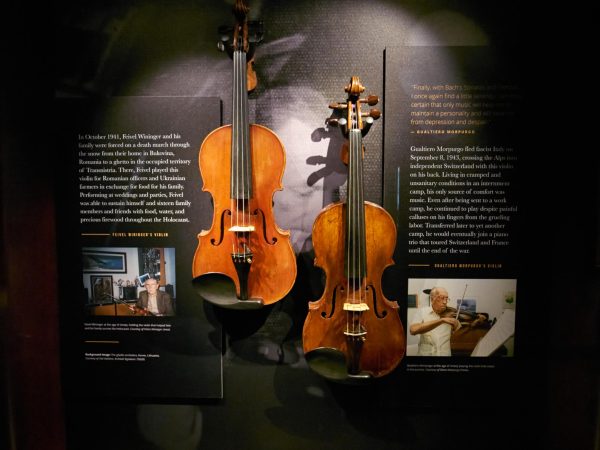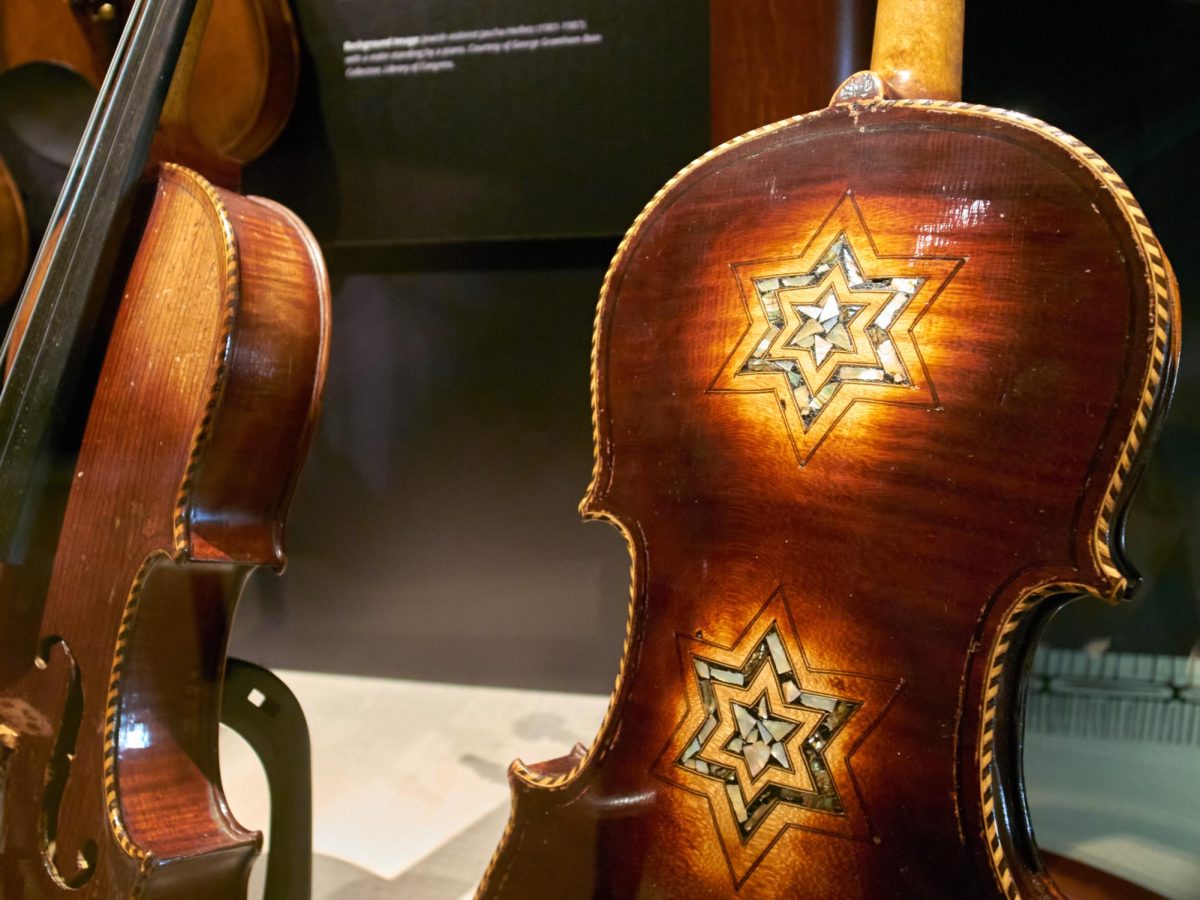For Jewish people during World War II, the violin was more than an instrument — it was a beacon of hope, a source of work and a savior. Violins that Jews played in Europe throughout the Holocaust are on display at the traveling Violins of Hope exhibit in Carnegie Mellon University’s Posner Center through Nov. 21.
The exhibit is the result of five years of work by Sandy Rosen, co-chair of Violins of Hope Greater Pittsburgh. The process was lengthy, according to her daughter, Amy Bernstein, who works as a volunteer docent at the exhibit. She said it involved raising money and organizing over 60 events throughout the community, but the exhibit is well worth the effort.
“I think it’s important to commemorate those lost and to remember World War II. I think it’s very relevant today,” Bernstein said. “This exhibit really just touched [Rosen’s] heart — she played violin as a child, and when she saw this exhibit in Arizona over five years ago, she just felt it was so beautiful and relevant and she needed to bring it to Pittsburgh.”
Violin makers and founders of Violins of Hope, Amnon and Avshi Weinstein have dedicated over 25 years to restoring violins and commemorating Jews murdered in the Holocaust. Each of the 100 restored violins tells a distinctive story of human resilience. Many of the violins are still playable — on Nov. 25, Joshua Bell will play one of the violins at the Pittsburgh Symphony Orchestra.
Signs accompanying the violins detail harrowing stories of survival and resistance during the Holocaust — one display describes Feivel Wininger, a Romanian survivor who fed his family by playing his violin for soldiers and farmers. On another, italicized yellow text reads “Wherever there were violins, there was hope.”
Kerollos Kamel, a violinist and first-year medical student at Pitt who attended the exhibit, said the exhibit teaches a history that’s difficult to comprehend using instruments that survived the horrors of ghettos and concentration camps. He said the exhibit humanizes those who perished in the Holocaust and helps the viewer more deeply understand the Jewish experience.
“To have something [music] you already relate with so deeply and emote with so deeply and use as an expression of your own emotion, characterize the emotion that a lot of these people went through when they were going through the Holocaust … it makes it hit pretty deep,” Kamel said. “It uses a language that makes it easy for you to understand and relate with and it’s very effective.”

Chris Fedor, first-year medical student at Pitt, has deep connections to music through his experience playing the violin. He said music has a special quality — the ability to provide relief in the most difficult circumstances.
“I use music a lot to connect with feelings and emotions. Here today, I learned a lot about how that was something that was similarly done for people going through a really traumatic period,” Fedor said. “I think there was a quote somewhere like, even if just for 15 minutes, the music within concentration camps could bring them some form of respite. That’s what’s special about music.”
Fedor said one of the most impactful displays is a violin ruined with Nazi vandalism.
“I think one of the most interesting displays was the violin that a man brought to a German luthier, who took it apart and on the inside wrote ‘Heil Hitler’ with the swastika and put it back together,” Fedor said. “It’s on the inside of the violin that you can’t see through the f-hole, so this Jewish violinist probably never knew it was there. It’s like, haunting.”
In her tours of the exhibit, Bernstein said she hopes to emphasize the importance of confronting hatred, especially when antisemitism persists to this day.
“I think it’s important to recognize how propaganda and misinformation can paint people’s worldviews,” Bernstein said. “I try to emphasize being an upstander and standing up for things that may not affect you but affect others. [I hope visitors learn] how easy it is for people to be marginalized.”
The exhibit holds a space honoring the victims of the Tree of Life synagogue shooting in 2018. Susan Kong, a first-year medical student at Pitt, said exhibits like Violins of Hope help individuals connect with history to more deeply understand the present.
“Music pretty much defines who I am as a person at this point. I think it’s important to connect with the history of all of it. When we play music we don’t really think about the history,” Kong said. “[It’s great to] have this space to reflect and read up on something that’s so important. There’s this section about the synagogue shooting, so it’s still really relevant to current events.”
A glowing Star of David adorns many of the violins, reflecting the close bond between Jewish culture and the violin. Bernstein said Jews had their own tradition of folk music — “Klezmer,” a combination of “kley” and “zemer,” the Hebrew words for instrument and song — for decades before World War II. She said the violins are a beautiful representation of the human spirit.
“The smallest things could give people hope,” Bernstein said.


